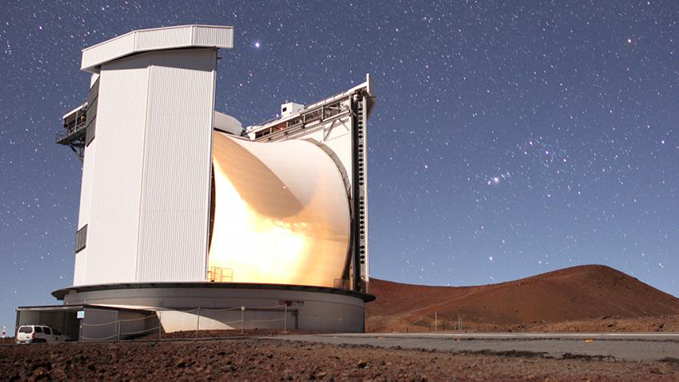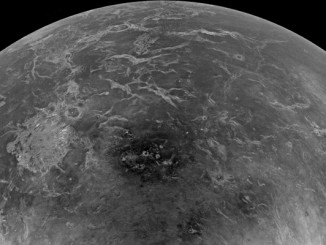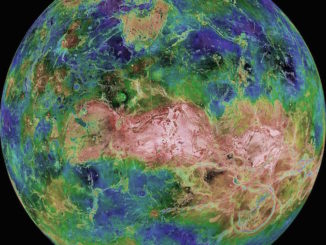
The best evidence for life beyond Earth has been found in the most surprising of places – the atmosphere of Venus.
A team led by Jane Greaves, who is a professor at Cardiff University, has detected the presence of phosphine gas in Venus’ clouds. The intriguing thing about phosphine, which is a molecule formed of three hydrogen atoms and one phosphorous atom, is that on Earth its only natural source is from some anaerobic (i.e., non-oxygen breathing) microbial lifeforms. No known geological mechanism or non-biological chemical reaction produces it on our planet, although it is produced deep inside gas giants like Jupiter and Saturn where hydrogen is plentiful and the temperature and pressure extremely high.

Image: JAXA / ISAS / Akatsuki Project Team.
“This was an experiment made out of pure curiosity, really,” says Greaves. “I thought we’d be able to rule out extreme scenarios, like the clouds being stuffed full of organisms. When we got the first hints of phosphine in Venus’ spectrum, it was a shock.”
The discovery, which was made thanks to observations by the James Clerk Maxwell Telescope in Hawaii and the Atacama Large Millimeter/submillimeter Array (ALMA) in Chile, is not confirmation that there is microbial life on Venus, cautions Greaves. Venus is a very different planet to Earth, with high temperatures and atmospheric pressures, and a carbon dioxide-rich atmosphere with clouds made of almost pure sulphuric acid. Although it is possible that there could be some chemical reaction that produces phosphine in Venus’ extreme conditions that does not occur on Earth, at present scientists do not know what that reaction could be.

This lack of knowing is in large part a result of the limited experiments modelling Venus’ chemistry. “There are some really nasty, explosive reactions when you try to put phosphorous compounds together with sulphuric acid,” Greaves tells Astronomy Now. “When we were trying to work out reaction rates, there was nothing to look up because no one had done those experiments on Earth – they didn’t want their lab to explode! But that’s why we’re being cautious in our conclusions.”
There is also the question of how life could survive in an environment like Venus’. Although there is a region in the Venusian atmosphere, between about 50 and 60 kilometres altitude, where the temperature and atmospheric pressure are Earth-like, there is still the sulphuric acid and near-total lack of water for any putative life to have to deal with.
“The real challenge is seeing whether any form of life could evolve to adapt to the incredibly acidic environment,” says Greaves. “We just have no analogy [to those conditions] on Earth.”

Image: JAXA / ISAS / Akatsuki Project Team.
Venus now jumps to the top of the list of targets in our Solar System where astrobiologists are looking for microbial life. Mars, as well as the underground oceans on Jupiter’s moon Europa and Saturn’s moon Enceladus, have been the locations that astrobiologists have focused on the most. However, if microbial life is confirmed to exist floating in the clouds in Venus’ atmosphere, it would blow the notion of a habitable zone, and life requiring Earth-like planets, right out of the window. If true, it would mean that we would need to radically widen our search for life beyond the Solar System to incorporate many more environments, particularly as there are likely to be more planets like Venus, than there are Earth-like planets that have the rare Goldilocks qualities of being ‘just right’.



